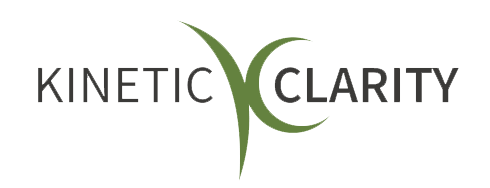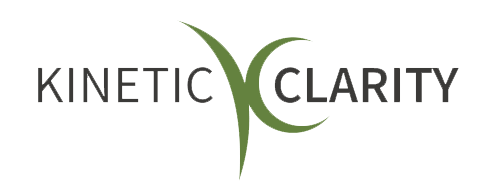Causes of Conflict in the Workplace: An Overview
Conflict is inevitable in any organization, whether a small business or a multinational corporation.
Different personalities, competing interests, and varying perspectives all contribute to potential discord among team members.
But the key to a healthy and productive workplace isn't necessarily to avoid conflict altogether but rather to understand its root causes and address them proactively. Let's explore the underlying causes of conflict in the workplace and some potential solutions.
Communication Gaps
The complexities of human communication can be both a blessing and a curse in the workplace. The diverse ways in which people express themselves, interpret messages, and make decisions can lead to a wealth of creative ideas and innovative solutions. However, these very same complexities can also cause misunderstandings, breed resentment, and lead to conflict when not properly managed. This is where communication gaps come into play.
Communication gaps occur when messages are not accurately conveyed, understood, or interpreted. This could happen for several reasons.
- Vague or Ambiguous Language: Using unclear language can lead to misunderstandings. For example, giving directions such as "do it soon" or "make it better" can be interpreted differently by different people, causing confusion and potential conflict.
- Non-Verbal Misinterpretation: Non-verbal communication, including body language, facial expressions, and tone of voice, often conveys more information than the words themselves. If these cues are misinterpreted, it can lead to misunderstandings and disagreements.
- Lack of Feedback: Communication is a two-way street involving both speaking and listening. If there is no opportunity for feedback or questions, the recipient may misinterpret the message, leading to errors and potential conflicts.
- Information Overload: When too much information is shared at once, essential details may be overlooked or forgotten, resulting in miscommunication and potential conflicts.
Addressing Communication Gaps
To address communication gaps in the workplace, fostering a culture of open, clear, and responsive communication is crucial.
- Clarity and Precision: Encourage the use of clear, specific, and precise language in all forms of communication. This might involve setting guidelines or offering training to improve employees' communication skills.
- Active Listening: Promote active listening, where individuals don't just hear the words spoken to them but also seek to understand the complete message being sent. This could involve training sessions on active listening techniques.
- Regular Feedback: Provide avenues for regular feedback within the organization. Feedback sessions should be seen as opportunities for growth and improvement rather than criticism.
- Effective Information Management: Develop systems to manage information flow effectively, ensuring that data is disseminated in a way that is easy to understand and retain.
Competing Interests
In the dynamic environment of a business, it's common for different individuals or departments to have distinct goals and interests. While this diversity can drive innovation and progress, it can also lead to competition and conflict if not effectively managed.
Competing interests can arise for several reasons:
- Different Goals: Each department within an organization is likely to have its own set of goals, which are necessary for the overall functioning of the business. For instance, the sales team might be focused on increasing revenue, while the production department may prioritize quality control and cost efficiency. If these goals aren't aligned, it can lead to conflict.
- Limited Resources: In situations where resources are limited, different teams or individuals might compete to access these resources. This can lead to disputes and discord if not managed effectively.
- Varied Perspectives: People have different ways of seeing the world and interpreting situations. What one person perceives as a beneficial course of action might be viewed differently by another. These differing perspectives can create tension and conflicts.
Addressing Competing Interests
The key to managing competing interests lies in alignment, transparency, and communication.
- Alignment of Goals: Ensuring that all departmental and individual goals align with the company's overarching mission and vision is crucial. This doesn't mean every team should have identical goals, but they should all contribute towards the organization's common objectives. This alignment can be fostered through strategic planning and regular communication.
- Transparent Resource Allocation: By developing clear and fair processes for resource allocation, organizations can minimize potential disputes over resources. This involves communicating decisions about resource distribution promptly and transparently, ensuring everyone involved understands the rationale behind these decisions.
- Fostering Mutual Understanding: Encourage employees to understand and appreciate their colleagues' roles, responsibilities, and challenges in different departments. This can be achieved through cross-departmental training sessions or team-building activities, which allow employees to step into each other's shoes and gain a broader perspective.
Personality Clashes
A workplace is a melting pot of different personalities, each with unique traits, behaviors, and ways of thinking. These differences can lead to a vibrant, diverse working environment that drives innovation and creativity. However, they can also cause friction, leading to personality clashes that might escalate into conflicts if not addressed correctly.
Personality clashes in the workplace often arise from:
- Different Working Styles: Some people might prefer a structured, organized approach to work, while others might thrive in a more flexible, spontaneous environment. Some employees might be more detail-oriented, while others focus on the big picture. These contrasting styles can sometimes cause tension and disagreements.
- Varied Communication Styles: Similarly, communication styles can significantly differ between individuals. Some might be direct and outspoken, while others might be more reserved and reflective. Misunderstanding or misinterpreting another's communication style can lead to conflict.
- Diverse Values and Beliefs: Each individual brings their personal values and beliefs to the workplace, shaping their attitudes and behavior. If these values are incompatible with those of their colleagues, it can result in personality clashes.
Addressing Personality Clashes
The key to addressing personality clashes lies in fostering understanding, respect, and empathy within the team.
- Promoting Understanding: Encourage team members to understand and appreciate their colleagues' different working and communication styles. This might involve training sessions on personality types and work styles, helping employees recognize and respect their team's diverse approaches.
- Creating a Respectful Environment: Foster a culture where every team member's unique traits are respected, even if they're significantly different from one's own. Regular reminders of the importance of mutual respect can help maintain a healthy working environment.
- Encouraging Empathy: Promote empathy within your team. This can be achieved by encouraging team members to consider their colleagues' perspectives and feelings before responding in situations of potential conflict.
- Conflict Resolution Training: Offer training in conflict resolution techniques to help your team navigate and resolve personality clashes in a constructive manner.
Resource Allocation
Every organization, regardless of its size, operates with a finite set of resources. These may include tangible assets like office space, equipment, or budget and intangible ones such as time, skills, or even personnel. How these resources are distributed, known as resource allocation, can significantly impact efficiency and harmony within a workplace. Poorly managed or perceived unfair resource allocation can often lead to disagreements and conflicts.
Resource allocation can cause conflict for several reasons:
- Perceived Inequity: If employees perceive resource allocation as unfair, it can lead to feelings of resentment and dissatisfaction. For instance, if one team believes it's doing more work but receiving fewer resources than another team, it can cause tension.
- Scarcity: Limited resources can intensify competition between individuals or departments, potentially leading to conflicts. This is particularly relevant when budget cuts or resource restrictions are in effect.
- Lack of Transparency: If the resource allocation process is opaque, it can lead to mistrust and speculation, fostering a fertile ground for conflict.
Addressing Resource Allocation Issues
Managing resource allocation effectively is critical to minimizing potential conflicts and fostering a harmonious work environment.
- Transparency: Be open and transparent about the decision-making process for resource allocation. Employees who understand how and why decisions are made are less likely to perceive the process as unfair.
- Equity and Fairness: Ensure resources are distributed fairly across teams and individuals. This doesn't necessarily mean an equal distribution but rather an equitable one that considers the needs, workload, and performance of each team or individual.
- Clear Communication: When changes in resource allocation are necessary, communicate them clearly and promptly. Provide the reasoning behind the changes to prevent misunderstandings and potential disputes.
- Open Feedback Channels: Provide avenues for employees to express their concerns or disagreements with resource allocation decisions. Listening to and addressing these concerns can help alleviate potential conflicts.
Workload and Job Responsibilities
Every role within an organization comes with a certain set of responsibilities and a related workload. When balanced correctly, this helps ensure productivity and job satisfaction. However, imbalances in workload and job responsibilities can become a significant source of conflict in the workplace.
Workload and job responsibilities can lead to conflict due to several reasons:
- Unequal Distribution: If employees perceive that workloads are distributed unfairly, it can lead to frustration and conflict. For example, some team members may feel overwhelmed with their workload while seeing others as underutilized.
- Unclear Responsibilities: When job roles and responsibilities are not clearly defined, it can cause confusion and potential conflict. Employees might argue over who should be doing what, or important tasks might get overlooked.
- Overwork: Continuous overworking can lead to burnout, decreased productivity, and increased conflict. Stressed and tired employees are more likely to have disagreements and less likely to resolve disputes effectively.
Addressing Workload and Job Responsibilities Issues
Effective management of workload and job responsibilities is critical to prevent potential conflicts and foster a productive work environment.
- Clarity in Roles and Responsibilities: Ensure each team member has a clear understanding of their role, responsibilities, and expectations. This clarity can prevent disagreements over who is responsible for what task.
- Fair Distribution of Work: Regularly assess workload distribution to ensure it's balanced and fair. This doesn't necessarily mean every employee should have the same volume of work, but the workload should be proportional to their role, capabilities, and capacity.
- Addressing Overwork: Pay attention to signs of overwork among your team members. Encourage breaks, respect off-work hours, and, if needed, consider hiring more staff or outsourcing tasks.
- Open Communication and Feedback: Maintain open lines of communication where employees can express their concerns about workload or job responsibilities without fear of retribution. Regular feedback sessions can also help identify and address issues before they escalate into major conflicts.
Conclusion
While conflict is unavoidable in working with others, understanding its root causes can help you navigate it effectively and foster a more harmonious, productive work environment. By addressing communication gaps, aligning interests, respecting personality differences, being fair in resource allocation, and balancing workloads, you can help mitigate the impact of these common conflict sources.
Remember, a conflict-free workplace is not necessarily the goal—healthy conflict can lead to creative solutions and improved processes. The goal is to manage conflict in a way that it becomes a catalyst for growth and improvement, not a barrier. Your journey towards a more understanding and empathetic workplace starts with acknowledging the reality of conflict and taking the first steps to address it effectively.
It's better to put workplace conflict in its place before it starts by building a resilient, resourceful and courageous culture. Help your leaders, teams, and organization with a bigger, better set of tools for strong, positive change. Contact Kinetic Clarity to discuss how we can help you achieve your organizational goals.













